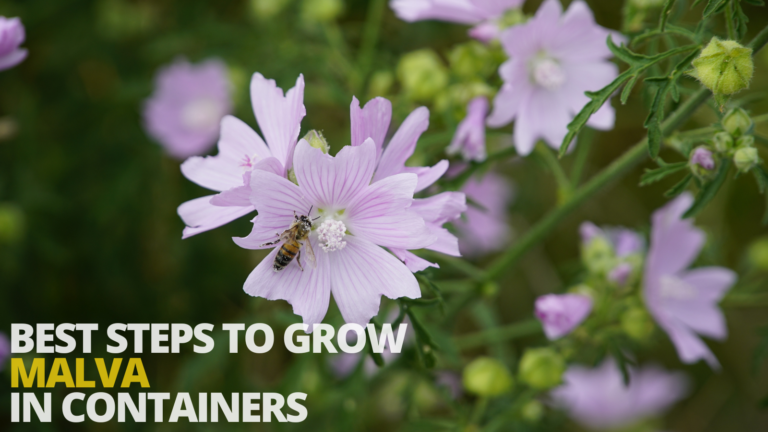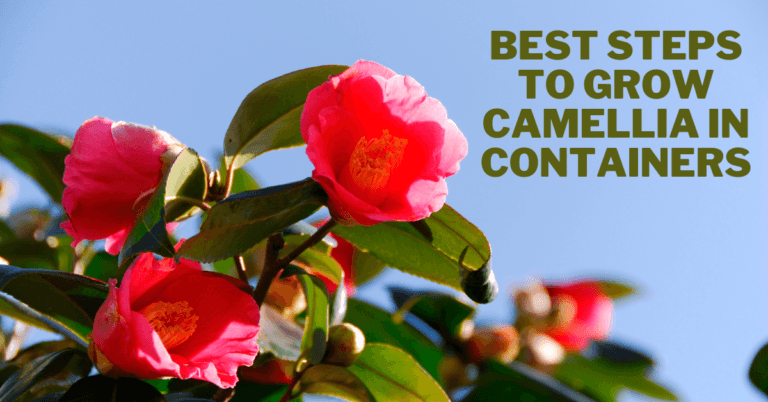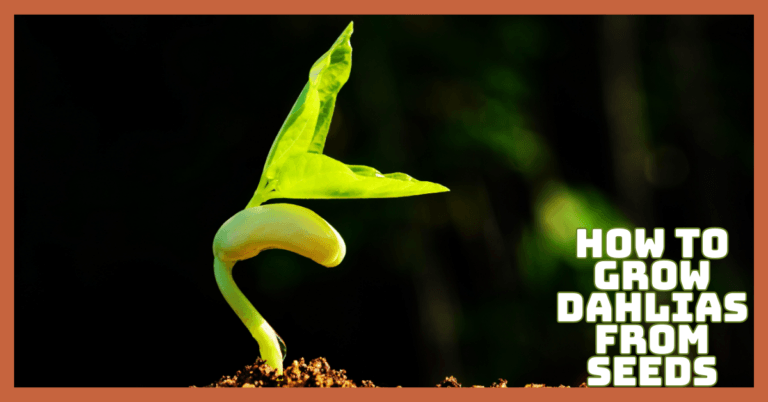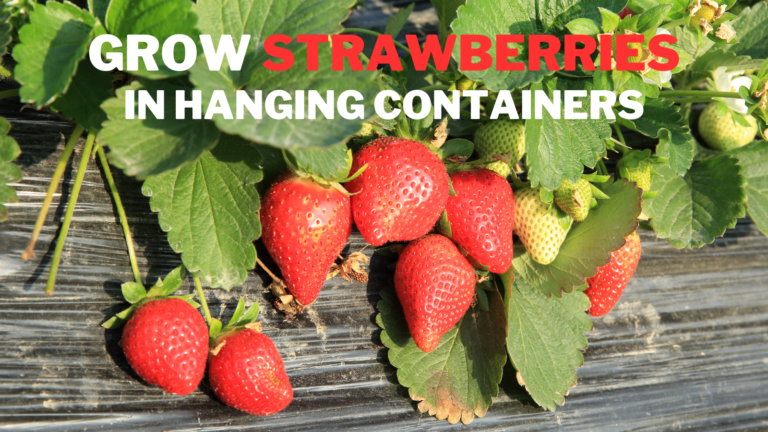Easy 10 Steps Of Growing Dragon Fruit In Pots
Easy 10 Steps Of Growing Dragon Fruit In Pots
The dragon fruit plant is a popular odd-looking plant that produces delicious fruits. Because it is a cactus, it is very adaptable and can thrive in various settings. Once you have clear instructions, learning how to cultivate Dragon fruit is not difficult.
This plant is simple to grow and can be used in gardens and pots. It can also be cultivated from seeds or cuttings.
Despite its threatening appearance, this plant is quite kind. This wonderful plant is native to Central America.
Still, because of its exotic, yummy taste, it is grown in many subtropical and tropical locations, including China, Israel, Vietnam, Malaysia, Thailand, and Nicaragua.
Dragon Fruit is one of the healthiest plants on the planet and provides excellent, sweet fruits. The seeds contain antioxidants, easily digestible carbohydrates, and omega fatty acids.
Although most people prefer to eat the plant's fruits with spoons, you may use them to make sauces, salsas, and smoothies.
Continue reading this instructive post on growing dragon fruit in pots.
History Of Dragon Fruit
Dragon fruit is native to Mexico, Central America, and South America and was introduced to Asia by the French via Vietnam in the early 1800s.
Dragon fruit is becoming increasingly popular in the United States, expanding commercial production.
Scientific Name For Dragon Fruit
Selenicereus Undatus (White fleshed Dragon Fruit/White Pithaya), (Red-fleshed Dragon Fruit, Red-fleshed Pitaya), Selenicereus Costaricensis, Selenicereus Megalanthus (yellow Pitaya, yellow dragon fruit).
Family
Dragon Fruit belongs to the family Cactus.
Common Names
Cactus Fruit, Pitaya, Strawberry Pear, Nanettika Fruit, Belle of the Night, Night Blooming Cereus.
Different Types Of Dragon Fruit
Before starting to grow dragon fruit in pots, you should know all varieties of dragon fruit.
White Dragon Fruit (Selenicereus undatus)
White dragon fruit is the most commonly produced pitaya, with its beautiful pink skin and white flesh flecked with delectable black seeds. The following are some of the more well-known cultivars:
1. L.A. Woman
An unusual kind that, according to some experts, leaves a foul taste in your mouth. It has nothing to do with how the Doors' song of the same name makes you feel.
2. David Bowie
The slim, white duke is a fascinating character. This white dragon fruit variety is thinner than the others and has a tangier, lemon-like flavour.
3. Seoul Kitchen
This white dragon fruit variety, named after a Doors song, is a little rounder in shape than its Los Angeles cousin, with smoother and sweeter flesh.
4. Vietnamese Jaina
Due to the sheer whiteness of its fruit, it is one of the world's most popular types.
5. Guyute
Guyute was an ugly pig in the Phish song of the same name. It's a very tasty type of white dragon fruit in the world of exotic plants.
6. Lake Atitlan
This exotic-sounding dragon fruit type is often on the larger – and tangier – side, and is named after a volcano-ringed lake in Guatemala.
7. Neitzel
This California native is sweet and very delicious when cold.
8. Alice
This namesake type of dragon fruit, named after a rock star of the fruit-growing world, Alice Snow, is less delicious than other types but has ultra-bright pink skin.
9. Harpua
Dragon fruit growers must be huge fans of Phish. This variety, named after a song with a very good jam, has a semisweet white pulp with melon undertones.
10. Thompson
This type of white dragon fruit is one of the largest, weighing up to 1.5 pounds.
Red Dragon Fruit (Selenicereus Costaricensis)
The red dragon fruit has the same lovely pink skin as its white siblings, but it has a burst of scarlet flesh inside.
1. Red Jaina
This very juicy cultivar has a deep-red pulp, making it an ideal match for a good blender.
2. Natural Mystic
Did you think we'd finished naming songs? Reconsider your position. This crimson dragon fruit, named after a Bob Marley song, is genuinely excellent, with a bigger and sweeter flavour.
3. Zamorano
This medium-sized red dragon fruit type is named after the Honduran university first produced it. It has a moderate, sweet flavour.
4. Costa Rican Sunset
Because of its slow-growth vine, this is a particularly distinctive variety of dragon fruit, as its name implies.
Pink Dragon Fruit (Selenicereus Costaricensis)
These are all sorts of red dragon fruit; however, the insides range from soft rose to hot pink.
1. Makisupa
This red-but-more-like-pink dragon fruit cultivar has lovely magenta flesh and a sweet-and-sour flavour. (This is the third Phish song reference for those keeping track.) Fans of jam bands, rejoice!)
2. American Beauty
This cultivar is recognized for its spectacular sweet flavour and is named after both the famous Grateful Dead album and its genuinely outstanding pink pulp.
3. Delight
This pink dragon fruit is on the larger side, with a smooth texture, sweet taste, and excellent soft pink flesh, and is fully deserving of its name.
4. Dark Star
The bearer of yet another Grateful Dead song name and a long and narrow shape with a moderate grape-like flavour.
5. Cosmic Charlie
This magenta-fleshed varietal rounds out the Deadhead bunch with a celestial taste of grape and kiwi.
6. Purple Haze
This Jimi Hendrix namesake is one of the largest dragon fruit species with a brilliant pink hue, few seeds, and a grape-like taste.
7. Voodoo Child
This pink dragon fruit, worthy of its witchy moniker (which also happens to be a Jimi Hendrix song), is small but mighty, packing a sweet grapey taste into a dark pink fruit no larger than an egg.
Yellow Dragon Fruit (Selenicereus megalanthus)
With dull yellow skin and a drastically distinct scale pattern, this dragon fruit species isn't afraid to stand out.
Only one yellow dragon fruit type exists, but it's usually considered the best, thanks to its crisp white flesh packed with sweetness.
Sour Dragon Fruit (Stenocereus)
This type of dragon fruit is known as Stenocereus, and it may be found predominantly in South and Central America, particularly in arid areas.
Although sour rather than sweet, it produces more juice than most other types and has long been a mainstay of indigenous peoples' diets.
However, a dragon fruit strives to impress regardless of its appearance or flavour.
Dragon Fruit Nutrition Facts
Here are the nutrition facts for a serving of 3.5 ounces, or 100 grams (USDA Food Composition Databases Governmental Authority).
- Calories: 60
- Protein: 1.2 grams
- Carbs: 13 grams
- Fiber: 3 grams
- Vitamin C: 3% of the RDI
- Iron: 4% of the RDI
- Magnesium: 10% of the RDI
Time To Plant
Although dragon fruit prefers a tropical climate, it can thrive in sub-tropical climes.
If you don't mind the cold winters, dragon fruits can be grown in the spring, fall, and summer. The ideal temperature is between 20 and 30 degrees. It grows well in both dry and moist environments.
The dragon fruit plant can withstand frost and freezing temperatures for brief periods. However, longer durations of frost may cause spoilage.
10 Steps Of Growing Dragon Fruit In Pots
1. Pot Requirements For Dragon Fruit Plants
- The pot should have a 15-24 inches diameter and a depth of 10-12 inches.
- A proper drainage system is required for pots. Two to three drain holes should be included in each pot.
- To cultivate dragon fruits, use plastic pots, clay pots, terracotta pots, drums, or cans.
- Use clay pots to keep the plant's temperature consistent for good growth.
- The larger the pot, the faster the dragon fruit will grow.
2. Soil Requirements
Dragon fruits thrive in healthy, well-drained soil. If you're using garden soil or bad soil, add some quality river sand to improve the drainage capacity.
Cactus mix is a suitable growing medium for cactus family plants and is recommended. Cactus potting soils can be found in nurseries, garden centers, and the internet.
If you can't find a cactus potting mix, use a good quality mix containing sand or perlite, organic manure, and compost in a 2:3:1:1 ratio.
Allow to sit overnight before planting after thoroughly mixing all ingredients and filling the container with potting soil.
3. Planting Of Dragon Fruit Plants
You can grow the tree in two ways.
Planting Dragon Fruit Plants From Seed
Dragon fruit is simple to grow from seed, although it can take 5-7 years to achieve fruiting maturity. Step-by-step instructions for cultivating dragon fruit from seed may be found here.
- To remove the flesh from the seeds, wash them. Using a moist paper towel, line a plastic container and evenly distribute the seeds on top. Cover and place in a warm, out-of-the-way location. Within two weeks, the seeds should germinate.
- Seedlings should be potted into a seedling tray filled with Yates Seed Raising Mix. When the seedlings are 25–30 mm tall, mix them. To keep the soil equally moist, water sparingly.
- When seedlings are 70–120 mm tall, repot them into separate pots filled with cactus and succulent mix. It will take several years for them to mature into fruiting size.
- Once the plants are ripe, repot them into the garden or pots. See our articles on how to produce dragon fruit in a garden and how to grow dragon fruit in a pot for further information.
Planting Dragon Fruit Plants From Cuttings
Dragon fruit, like many cacti and succulents, propagates easily from cuttings. Plants can be simply shared among family, friends, and neighbours or purchased online with little risk of death during shipping.
Cuttings mature faster than seeds, requiring 2-3 years instead of 5-7 years to reach fruiting maturity.
To cultivate dragon fruit from cuttings, follow our step-by-step instructions:
- Using a healthy plant, cut a 30-50 centimetre piece. Allow the ends to callus in a cool, dry location away from direct sunshine.
- Fill the pot with a well-draining mix and water it thoroughly. Place in a cool, dry location away from direct sunlight and water once a week.
- Roots will appear in 4-6 weeks (it may take longer in cooler conditions). Once ready, plant it in the garden or a pot. See our articles on how to produce dragon fruit in a garden and how to grow dragon fruit in a pot for further information.
4. Pollination Of Dragon Fruit Plants
Although many dragon fruit varieties self-pollinate, others require cross-pollination. If your dragon fruit is unable to self-pollinate, you'll need to carefully nurture two or more dragon fruit plants for cross-pollination.
Because dragon fruit blossoms bloom at night, pollination relies on moths and bats. You can even do this at night for further security.
5. Water Requirement For Dragon Fruit Plants
- The dragon fruit plant does not need to be flooded. Plants might decay if they are overwatered.
- Maintain continuous moisture in the potting mix.
- Once the dragon fruit plant has climbed the poles, it is best to keep them moist.
- The dragon fruit plant can withstand extreme drought conditions for a long time.
6. Sunlight Requirement For Dragon Fruit Plants
Sunlight is very important to dragon fruits. They thrive in partial to full sun. These plants can also be cultivated in locations with a lot of light. The dragon fruit leaves should be exposed to sunshine for rapid growth.
To thrive, the dragon fruit plant needs 6–7 hours of sunlight daily. Adequate sunlight accelerates the plant's growth, leading to more blooms and fruiting.
7. Support Of Dragon Fruit Plants
The dragon fruit plant is a climbing cactus that requires assistance. As it matures, it develops aerial roots from the branches and finds something to climb on.
If you're growing dragonfruit, it's best to find something to support your plant. Make an arbour or attach a robust trellis.
8. Temperature Requirements For Dragon Fruit Plants
Dragon fruit cannot survive in cold temperatures. Temperatures below 32°F (0°C) are lethal.
Similarly, temperatures above 100°F (38°C) produce problems. Keep the plant above 50°F in a chilly climate (10°C).
In a hot environment, protect the plant from the afternoon sun by placing it in a shaded area during the summer.
9. Pruning Of Dragon Fruit Plants
Pruning is necessary to keep this plant on the trellis, increase air circulation, avoid fungal infection, and keep it at a healthy height.
Otherwise, it can reach a height of 20 feet in ideal growing conditions. Each year, remove any overgrowing, rotting, overcrowded, or dead stems, leaving just the healthier and more productive ones.
10. Fertilizers For Dragon Fruit Plants
- If you're growing dragon fruits from seeds, start feeding the plant after it reaches 4 to 5 inches in height.
- Start feeding the plant after 6 to 7 months if you produce dragon fruits from cuttings. Developing a complete root system takes at least 5 months for a dragon fruit cutting.
- Once every two months, feed the plants with slow-release fertilizers with low nitrogen levels.
- Feeding can be done with an all-purpose commercial fertilizer, although an organic fertilizer with low nitrogen levels is preferred.
- If you're using organic fertilizer, you should apply it every three months.
- Feed the plants Urea, Phosphate, and Potassium in a 1:1:2 ratio before and after flowering and harvesting seasons to improve fruit production. Over-fertilizing might stifle a plant's growth.
Harvesting Dragon Fruit
Dragon fruit bears fruit regularly in most regions from summer to late fall and maybe winter. Its production is dependent on the weather.
Growing it in a temperate climate will bear fruit from summer through early and mid-fall.
Once your dragon fruit tree is established, it will produce blossoms and fruits. This will occur in the first or second year following the planting.
When the dragon fruit's skin colour changes from bright green to red or pink, it's time to harvest it. It produces oval to ovate-shaped fruits 10 to 15 cm long and appears 30 to 50 days after flowering.
Dragon fruit has a rough, scaly pericarp that is usually pink in hue. However, depending on the species, it might be red or yellow. The flesh is white and contains black seeds, and it is found on the inside.
Pests & Diseases Of Dragon Fruit Plants
- Mealybugs and aphids are two common pests that attack dragon fruit plants. These insects feed on the plant's delicious sap and wreak havoc on its growth.
- Ants are a huge issue; ants swarm the plant and drink the sap.
- Spider mites and thrips can also wreak havoc on plants, slowing their growth.
These pests can be treated with neem, horticultural, or a light soapy water spray. To treat bugs, avoid using commercial organic insecticides.
Diseases that harm dragon fruit are called dragon spots, which form on the stems and leaves of the plant owing to bacteria.
This disease can quickly transfer from one plant to another. To treat infections in dragon fruits, use an organic fungicide.
Fungal and bacterial illnesses can be controlled by using commercial potting mixes and watering at the base of the plant rather than the branches.
During the hottest part of the summer, when the sun is scorching hot, the Plant is susceptible to sunburn.
Overwatering has also caused the plant to decay. Plants can be protected from rotting by using well-drained soils.
Conclusion
Dragon fruit is a low-calorie tropical fruit with less sugar and carbohydrates than many other fruits.
Overall, dragon fruit is a one-of-a-kind fruit that is delicious and can bring diversity to your diet. So, you should cultivate dragon fruit. If you face any problems growing dragon fruit in pots, feel free to comment below.
I trust you enjoyed this article on the Easy 10 Steps Of Growing Dragon Fruit In Pots. Please stay tuned for more blog posts soon. Take care!
JeannetteZ
>>>Please click here to read my all-inclusive article about Container Gardening<<<
Are you interested in homegrown herbs and medicine? Please click here to find out more about it!
Your Opinion Is Important To Me
Thoughts? Ideas? Questions? I would love to hear from you. Please leave me your questions, experiences, and remarks about this article on the Easy 10 Steps Of Growing Dragon Fruit In Pots in the comments section below. You can also reach me by email at Jeannette@Close-To-Nature.org.
Disclosure
This post may contain affiliate links. I earn from qualifying purchases as an Amazon Associate and other affiliate programs. Please read my full affiliate disclosure.
You might also enjoy these blog posts:
Top Tips To Relax In Life In 2022
Grow Million Bells Flowers In Containers
Best Tips To Help Your Family Connect With Nature




















